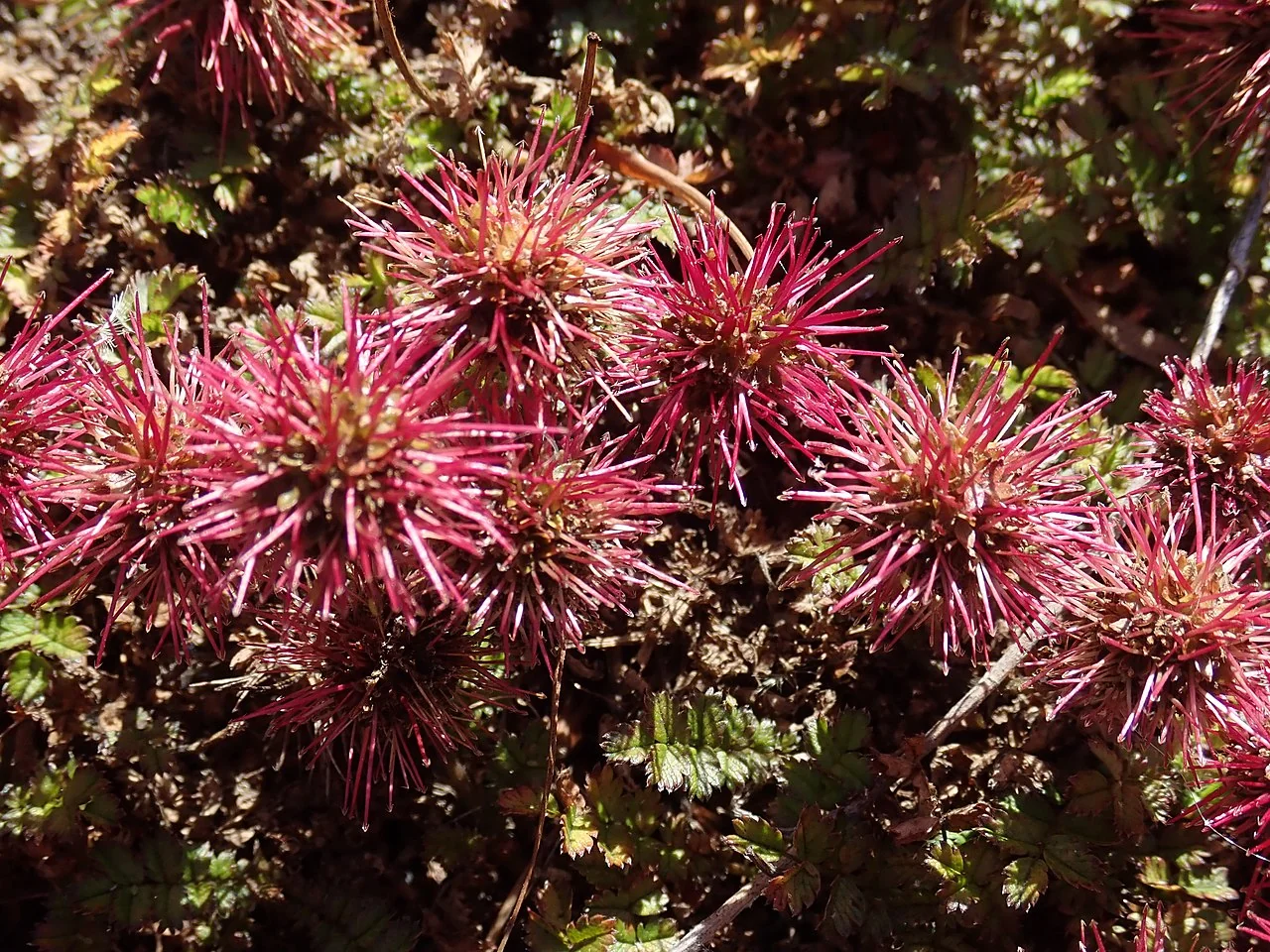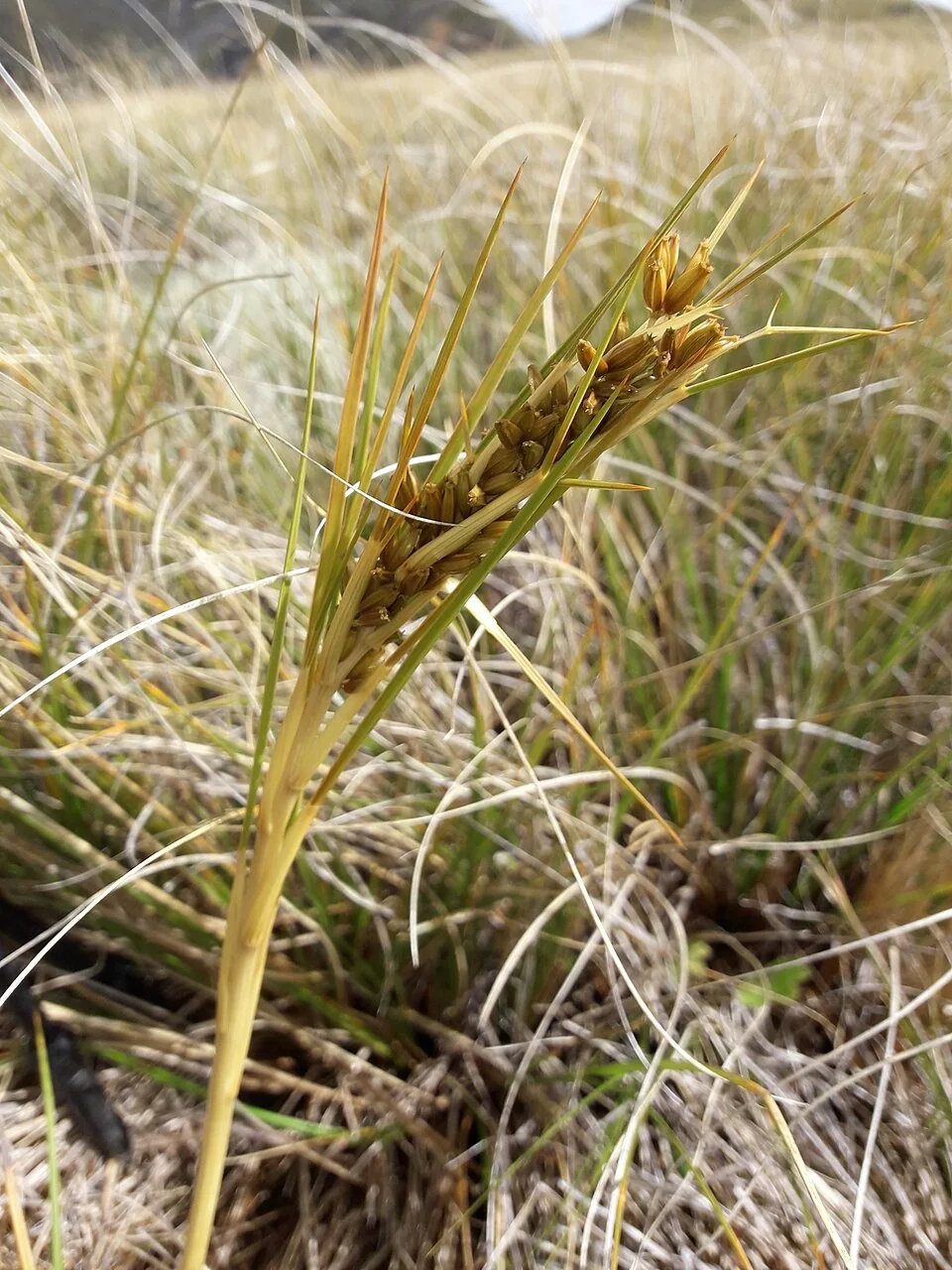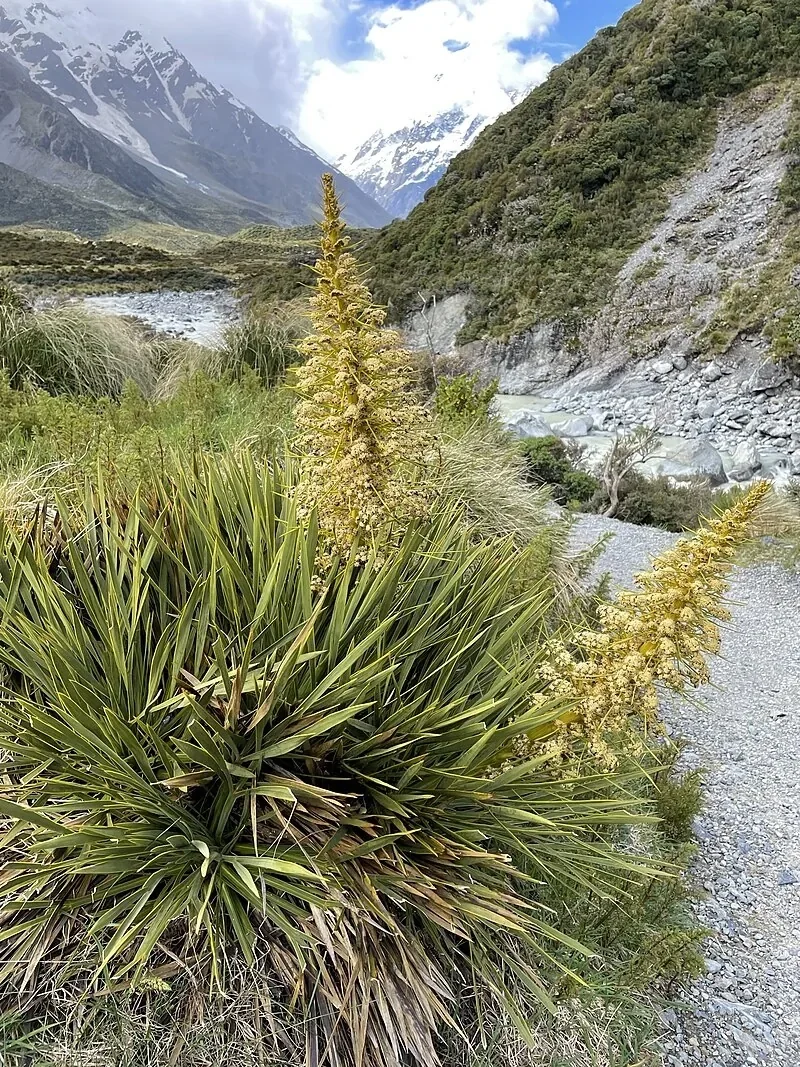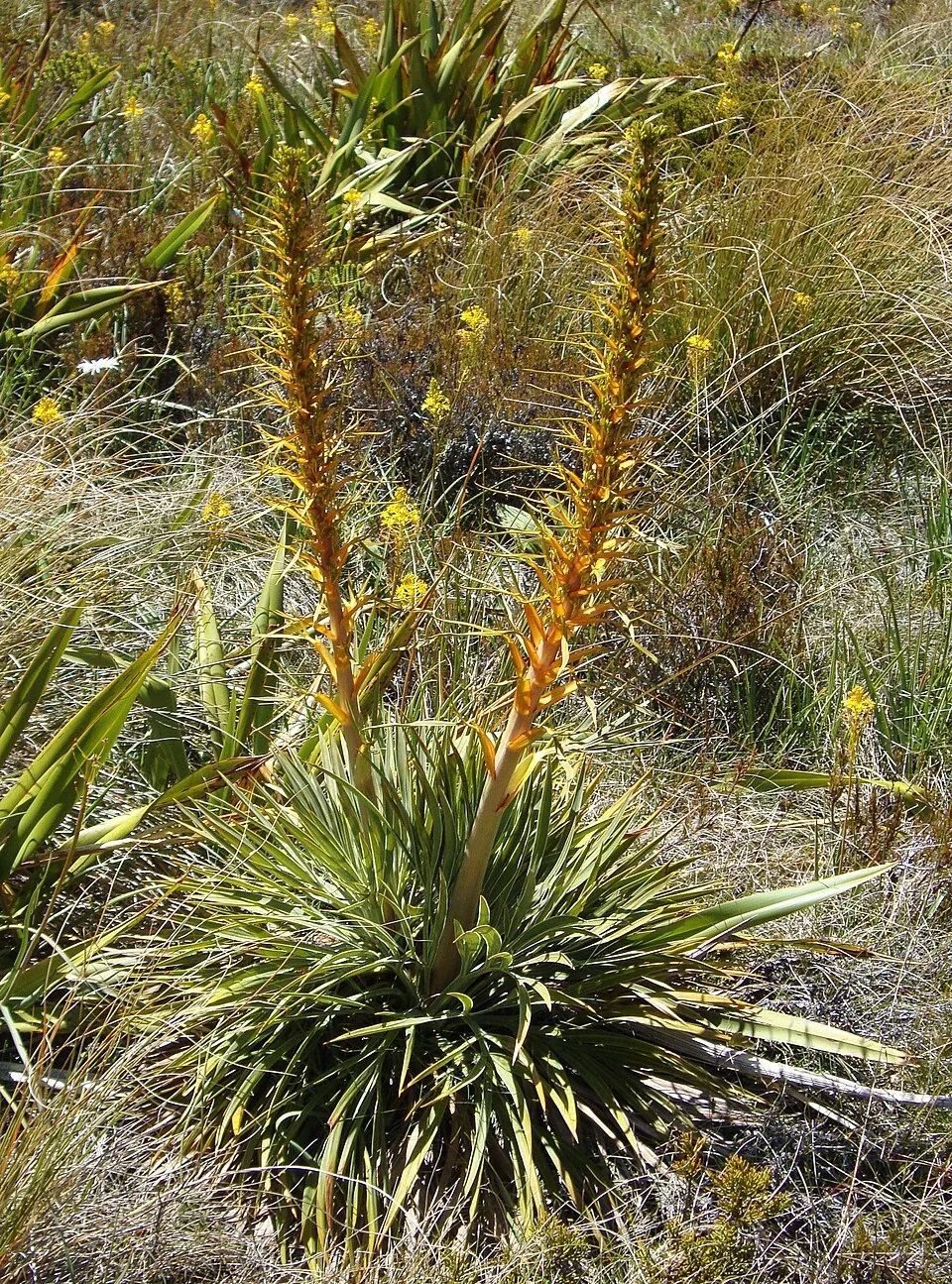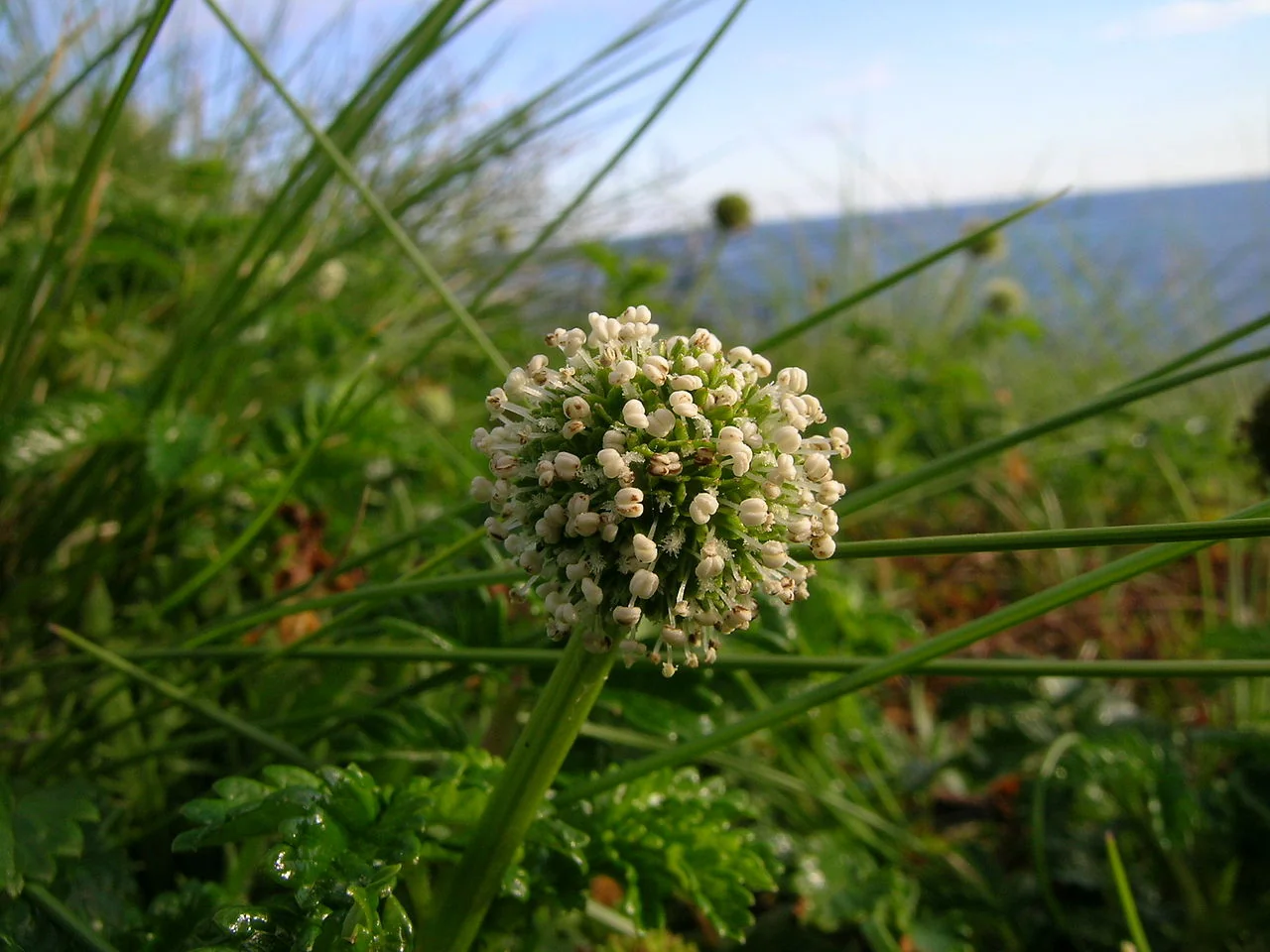
Red Bidibidi
Acaena novae-zelandiae
Explore more NZ native plant guides in our index .
Introduction
About Red Bidibidi
Red Bidibidi ( Acaena novae-zelandiae ) is a prostrate native herb known for its distinctive red spiny burrs and sprawling growth. This robust ground cover species produces characteristic barbed fruits that readily attach to passing animals and clothing, aiding in seed dispersal. With its ability to form dense mats and tolerate harsh conditions, Red Bidibidi plays an important role in New Zealand's coastal and grassland ecosystems while offering excellent ground cover potential for native gardens.

Acaena novae-zelandiae , commonly known as Bidibidi or Piripiri, is a prostrate herb native to New Zealand. It is characterized by its reddish-brown stems, small, pinnate leaves, and distinctive burrs with barbed spines that readily attach to clothing and animal fur. This plant is a common sight in a variety of habitats, from coastal areas to grasslands and disturbed sites. Its vigorous, mat-forming habit makes it an excellent choice for groundcover, effectively suppressing weeds and stabilizing soil, particularly in banks, slopes, and coastal areas.
Quick Facts
Key Characteristics
| Scientific Name | Acaena Novae Zelandiae |
|---|---|
| Height | 5-10 cm |
| Spread | up to 1.5 m |
| Water Needs | Low to moderate; prefers well-drained soil |
| Light | Full sun to partial shade |
| Frost Tolerance | High |
| Salt Tolerance | High |
| Growth Rate | Fast |
| Lifespan | Perennial |
Climate Best Suited to
Acaena novae-zelandiae is a widespread and adaptable plant, found throughout New Zealand. It is particularly common in coastal areas, where it can tolerate salt spray and sandy soils. It is also found in grasslands, shrublands, and disturbed areas, such as roadsides and pastures.
Regional Suitability
| Whangārei | Ideal |
| Auckland | Ideal |
| Hamilton | Suitable |
| Rotorua | Suitable |
| Tauranga | Ideal |
| Gisborne | Ideal |
| New Plymouth | Ideal |
| Whanganui | Ideal |
| Palmerston North | Suitable |
| Napier | Ideal |
| Wellington | Ideal |
| Nelson | Ideal |
| Christchurch | Suitable |
| Dunedin | Suitable |
| Invercargill | Suitable |
| City | Climate Suitability |
|---|
Natural Habitat
Typical Environments
Acaena novae-zelandiae is native to New Zealand, southeastern Australia, and New Guinea, showcasing remarkable adaptability across diverse environments.
- Geographical Distribution: Found from lowland to alpine areas, at elevations between 0 and 1700 meters above sea level.
- Preferred Conditions: Thrives in forest edges, open grasslands, scrublands, and coastal areas such as dunes. It is adaptable to both moist and dry sites and can grow in clay and sandy soils.
- Light Tolerance: Tolerates conditions from full sun to full shade.
- Naturalized Regions: Has become naturalized in various parts of the world, including Campbell Island (New Zealand), Britain, Ireland, California, and Western Australia, often due to its efficient seed dispersal via burrs.
Plant Conservation
Status and Management
Within Aotearoa New Zealand, Acaena novae-zelandiae is widespread and currently assessed as Not Threatened . It thrives in a broad range of habitats from dunes and coastal margins to inland grasslands and open shrublands, and no targeted recovery actions are required nationally. Management considerations arise chiefly outside its native range: the species has naturalised in parts of Britain, Ireland, western North America and Australia where its clinging burrs aid rapid spread, and it can be locally weedy. In pastoral settings the burrs also foul wool and can irritate livestock and dogs. In New Zealand restoration plantings it remains a useful, durable native groundcover; simple hygiene (e.g., avoiding transport of burrs on clothing and gear) limits unwanted spread between sites.
Growing Requirements
Soil Requirements
Acaena novae-zelandiae thrives in freely draining soils such as silty and sandy loams. It will not tolerate standing water or waterlogged soils, which can quickly kill the plant.
- Prefers sandy or gritty, well-drained soils
- Tolerates poor soils and low fertility conditions
- Avoid heavy clay or waterlogged soils
- Can handle slightly acidic to neutral pH
- Adapts to coastal conditions including sandy soils
Light Requirements
Red Bidibidi performs best in full sun conditions, though it can tolerate partial shade. Sites that receive high amounts of sunlight promote the most vigorous growth and characteristic reddish colouring.
- Prefers full sun for optimal growth and colouring
- Can tolerate partial shade but may be less vigorous
- At least 6 hours of direct sunlight daily is ideal
- Open, exposed positions suit its natural habitat
Water Requirements
Once established, Acaena novae-zelandiae is remarkably drought-tolerant and requires minimal watering. It's particularly well-sunlit areas with dry summers and low-maintenance garden situations.
- Drought-tolerant once established
- Water during establishment only
- Excellent choice for areas with dry summers
- Avoid overwatering as this can cause root rot
- Natural rainfall usually sufficient in most areas
Planting Guide
-
When to Plant
Plant in autumn or spring.
-
Site Preparation
Choose a sunny, well-drained site.
-
Planting and Aftercare
Dig a hole twice the width of the pot. Place the plant in the hole and backfill with soil. Water well.
Ecological Role
Groundcover Functions
Acaena novae-zelandiae , also known as red bidibid, plays several ecological roles, some of which are beneficial in its native range and others that are detrimental in introduced environments.
- Seed Dispersal: The plant's distinctive burrs are highly effective for seed dispersal. These small, spiky structures readily attach to animal fur, feathers, clothing, and shoes, enabling the seeds to be transported over significant distances.
- Ground Cover and Erosion Control: As a prostrate, mat-forming perennial, Acaena novae-zelandiae serves as ground cover. It is particularly effective at stabilizing loose soils, slopes, and banks, thereby aiding in erosion control.
- Habitat Modification and Competition: In regions where it has been introduced, such as the UK and parts of the US, Acaena novae-zelandiae can become an invasive species. It forms dense vegetation mats that outcompete native plant species, hindering their establishment and spread, especially in open habitats like sand dunes. This competitive advantage can lead to a reduction in native biodiversity.
- Impact on Wildlife: The burrs can pose a threat to birds by becoming entangled in their feathers, which may impede their movement and survival.
Uses and Significance
Landscaping and Erosion Control
Acaena novae-zelandiae is highly valued in landscaping as a vigorous groundcover. It forms dense, creeping mats that effectively suppress weeds and stabilize soil, making it ideal for banks, slopes, coastal areas, and restoration projects. Its toughness and adaptability allow it to thrive in exposed and coastal conditions, tolerating poor soils, wind, frost, and drought.
Traditional Medicinal Uses
Indigenous communities in Australia have historically recognized the medicinal properties of Acaena novae-zelandiae . The young leaves are traditionally used to prepare a tonic for overall health, particularly for issues related to the kidneys, bladder, and stomach. Crushed leaves were also applied topically as a paste or wash to wounds to prevent infections and promote healing. Dried "tiny tips" of young succulent leaves may also be brewed as tea.
Ecological Role (Seed Dispersal)
The plant produces distinctive burr-like seed heads with four barbed spines, approximately 10 mm long. These burrs readily attach to wool, feathers, clothing, and animal fur, aiding in seed dispersal. While this mechanism is effective for the plant's propagation, it can also be a nuisance for humans and animals.
Cultural Significance
Traditional Uses and Values
Red Bidibidi ( Acaena novae-zelandiae ) was known to Māori as piripiri, a name that refers to its clinging nature. The burrs were sometimes used in traditional games and as a natural adhesive. The plant's presence was also an indicator of certain soil types and environmental conditions.
Landscaping Applications
Acaena novae-zelandiae , commonly known as Bidibidi, is a highly versatile plant with numerous landscaping applications, particularly valued for its robust growth and adaptability. Its vigorous, mat-forming habit makes it an excellent choice for groundcover, effectively suppressing weeds and providing a dense, attractive carpet.
Key Landscaping Uses:
- Groundcover: Forms dense mats, ideal for weed suppression and creating a lush, low-maintenance surface.
- Erosion Control and Soil Stabilization: Its fast-spreading nature and strong root system make it perfect for planting on banks, slopes, and coastal areas to prevent soil erosion.
- Low-Maintenance Gardens: Thrives in exposed and coastal conditions, requiring minimal care once established.
- Native Plantings and Restoration Projects: A valuable component for native plant designs and ecological restoration efforts.
- Textural Contrast: Its fine foliage provides an interesting textural element when combined with other plants.
- Seasonal Interest: The distinctive red, burr-like seed heads add visual appeal, especially in autumn and winter.
- Lawn Substitute: Can be used as an alternative to traditional lawns in areas with light foot traffic.
- Wildlife Habitat: Provides shelter for small wildlife and its seeds are a food source for native birds.
Considerations:
- Invasive Potential: Can spread vigorously via seeds and stolons, requiring management in some garden settings.
- Burrs: The barbed burrs readily attach to clothing and animal fur, which can be a nuisance in high-traffic areas.
Seasonal Care Calendar
Spring
Spring is the ideal time for planting Red Bidibidi and controlling its spread. New growth emerges vigorously as temperatures warm, making it perfect for establishment activities.
- Best time for planting new specimens
- Cut back overgrown areas to rejuvenate growth
- Remove rooted stems from unwanted areas
- Apply light fertilizer if desired for vigorous growth
- Take divisions for propagation
Summer
Summer brings the main flowering period with minute flowers clustered into balls. This is when the plant's spreading growth is most active and requires monitoring.
- Minute flowers appear in clustered balls throughout summer
- Monitor and control spreading if necessary
- Drought tolerance means minimal watering needed
- Mow flowers before burr formation to limit spread
- Good time for taking cuttings and divisions
Autumn
Autumn sees the formation of the characteristic spiny-hooked burrs. This is an important time for seed management and controlling unwanted spread through seed dispersal.
- Spiny burrs develop and ripen for dispersal
- Remove burrs before dispersal to control spread
- Collect seeds for propagation if desired
- Good time for major pruning and reshaping
- Reduce watering as growth naturally slows
Winter
Winter is the dormant period when Red Bidibidi requires minimal care. The plant is extremely hardy and needs no special protection in most New Zealand conditions.
- Dormant period with minimal active growth
- Excellent cold tolerance requires no protection
- No watering needed except in extreme drought
- Plan for spring management and expansion
- Monitor for any pest or disease issues
Pruning and Maintenance
Techniques and Timing
Acaena novae-zelandiae is a vigorous spreader that requires regular maintenance to control its growth and prevent it from becoming invasive in garden settings.
- Cut back in spring to rejuvenate and control spread
- Remove rooted stems from areas where growth is not wanted
- Mow or cut flowers before burr formation to prevent seed spread
- Regular edge trimming keeps the plant within bounds
- Light shearing maintains dense, compact growth
- Remove dead or damaged foliage as needed
- Limit disturbance to stolons to reduce vegetative spread
The key to successful management is understanding that this plant can spread 4-5 meters in two years under good conditions, so proactive control is essential to prevent unwanted colonization of garden areas.
How to Grow Red Bidibidi
Division
Division is extremely easy and the most reliable method for propagating Red Bidibidi, as this prostrate perennial naturally spreads through creeping stems that root at nodes. The plant can be divided at virtually any time of the year, though spring and early autumn provide optimal conditions for rapid establishment. During winter months, division should be done in a protected environment like a greenhouse. To divide, simply lift sections of the mat-forming growth, ensuring each division has both roots and growing shoots. The creeping stolons make separation straightforward - look for naturally rooted nodes and cut between them with clean, sharp tools. Each division should be at least 5-10cm across with a healthy root system. Replant immediately at the same depth as the original plant, spacing divisions 30-40cm apart to allow for rapid spreading. Water thoroughly after planting and maintain consistent moisture for the first few weeks. This vigorous grower establishes quickly, often showing new growth within 1-2 weeks in favorable conditions. Division not only provides new plants but also helps manage the spread of this sometimes invasive species by redirecting growth energy.
Seeds
Seed propagation of Red Bidibidi is straightforward and offers excellent results with proper timing and technique. Seeds are contained within the characteristic hooked burrs that readily attach to clothing, animals, and garden tools - nature's way of ensuring widespread dispersal. Collect mature seed heads when they turn brown and easily detach from the plant, typically in late summer to autumn. Remove seeds from the burrs and store in a cool, dry place where they remain viable for several years. Sow seeds in autumn for natural winter stratification or provide artificial cold stratification for 4 weeks to improve and speed up germination. Plant seeds at a depth of 5mm in well-draining seed-raising mix, maintaining temperatures between 10-15°C for optimal germination. Keep the growing medium consistently moist but not waterlogged throughout the germination period, which typically takes 4-12 weeks. Seeds can also be sown in spring after the last frost with similar success rates. Seedlings are vigorous once established and should be transplanted when they have developed several sets of true leaves and a robust root system. This method produces genetic diversity and is particularly useful for large-scale plantings or naturalizing areas.
Cuttings
Stem cuttings provide another viable propagation method for Red Bidibidi, particularly useful during mid-summer when the plant is in active growth. Take cuttings from healthy, non-flowering shoots during the warmer months when the plant is growing vigorously. Select firm, current-season growth and cut 6-10cm lengths, making clean cuts just below a node where roots will develop most readily. Remove the lower leaves to prevent rotting while maintaining 2-3 pairs at the tip for photosynthesis. Place cuttings in a cold frame or protected environment with good ventilation but protection from direct sunlight and strong winds. Insert cuttings into a well-draining propagation mix, ensuring at least one node is buried beneath the surface. Maintain consistent moisture levels without waterlogging, as Red Bidibidi is susceptible to rot in overly wet conditions. Rooting typically occurs within 6-10 weeks, with new growth indicating successful establishment. This method is less commonly used than division due to the ease of the latter, but it's valuable when trying to establish plants in areas where division material is limited. Once rooted, gradually acclimatize cuttings to outdoor conditions before transplanting to their permanent positions.
Pests and Diseases
Common Pests
- Aphids: Small, sap-sucking insects that can cause stunted growth and leaf distortion.
- Spider Mites: Tiny arachnids that can cause discoloration and weaken foliage, especially in dry conditions.
- Thrips: Tiny insects that feed on plant tissues, leading to distorted growth and reduced vigor.
- Snails and Slugs: Can damage young plants and tender new shoots.
Common Diseases
- Leaf Rot: A fungal disease that causes decay and discoloration of leaves, thriving in moist conditions and potentially leading to plant death if untreated.
- Yellow Edges: A fungal disease that results in chlorosis (yellowing) and stunted growth.
Acaena novae-zelandiae is generally resilient to pests and diseases when grown in appropriate conditions. Most issues can be prevented by providing good drainage and appropriate light levels.
Bonus Tip
Interesting Facts
Did you know that the name 'Acaena' comes from the Ancient Greek word 'akaina', which means 'thorn' or 'spine'- This is a direct reference to the plant's spiky burrs. The specific name 'novae-zelandiae' was given by botanist Thomas Kirk in 1871, and simply means 'of New Zealand'.


